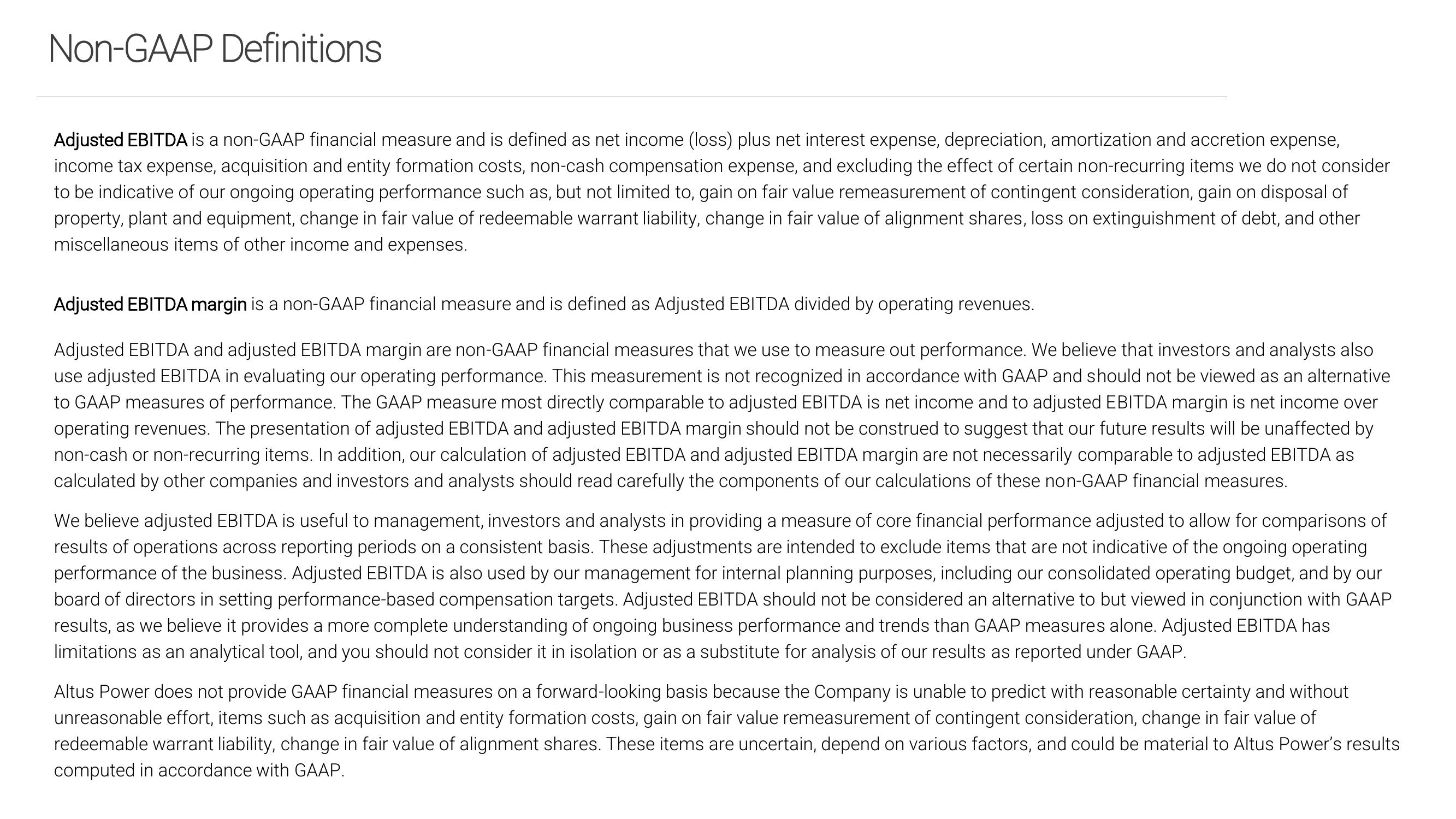Altus Power Investor Presentation Deck
Non-GAAP Definitions
Adjusted EBITDA is a non-GAAP financial measure and is defined as net income (loss) plus net interest expense, depreciation, amortization and accretion expense,
income tax expense, acquisition and entity formation costs, non-cash compensation expense, and excluding the effect of certain non-recurring items we do not consider
to be indicative of our ongoing operating performance such as, but not limited to, gain on fair value remeasurement of contingent consideration, gain on disposal of
property, plant and equipment, change in fair value of redeemable warrant liability, change in fair value of alignment shares, loss on extinguishment of debt, and other
miscellaneous items of other income and expenses.
Adjusted EBITDA margin is a non-GAAP financial measure and is defined as Adjusted EBITDA divided by operating revenues.
Adjusted EBITDA and adjusted EBITDA margin are non-GAAP financial measures that we use to measure out performance. We believe that investors and analysts also
use adjusted EBITDA in evaluating our operating performance. This measurement is not recognized in accordance with GAAP and should not be viewed as an alternative
to GAAP measures of performance. The GAAP measure most directly comparable to adjusted EBITDA is net income and to adjusted EBITDA margin is net income over
operating revenues. The presentation of adjusted EBITDA and adjusted EBITDA margin should not be construed to suggest that our future results will be unaffected by
non-cash or non-recurring items. In addition, our calculation of adjusted EBITDA and adjusted EBITDA margin are not necessarily comparable to adjusted EBITDA as
calculated by other companies and investors and analysts should read carefully the components of our calculations of these non-GAAP financial measures.
We believe adjusted EBITDA is useful to management, investors and analysts in providing a measure of core financial performance adjusted to allow for comparisons of
results of operations across reporting periods on a consistent basis. These adjustments are intended to exclude items that are not indicative of the ongoing operating
performance of the business. Adjusted EBITDA is also used by our management for internal planning purposes, including our consolidated operating budget, and by our
board of directors in setting performance-based compensation targets. Adjusted EBITDA should not be considered an alternative to but viewed in conjunction with GAAP
results, as we believe it provides a more complete understanding of ongoing business performance and trends than GAAP measures alone. Adjusted EBITDA has
limitations as an analytical tool, and you should not consider it in isolation or as a substitute for analysis of our results as reported under GAAP.
Altus Power does not provide GAAP financial measures on a forward-looking basis because the Company is unable to predict with reasonable certainty and without
unreasonable effort, items such as acquisition and entity formation costs, gain on fair value remeasurement of contingent consideration, change in fair value of
redeemable warrant liability, change in fair value of alignment shares. These items are uncertain, depend on various factors, and could be material to Altus Power's results
computed in accordance with GAAP.View entire presentation